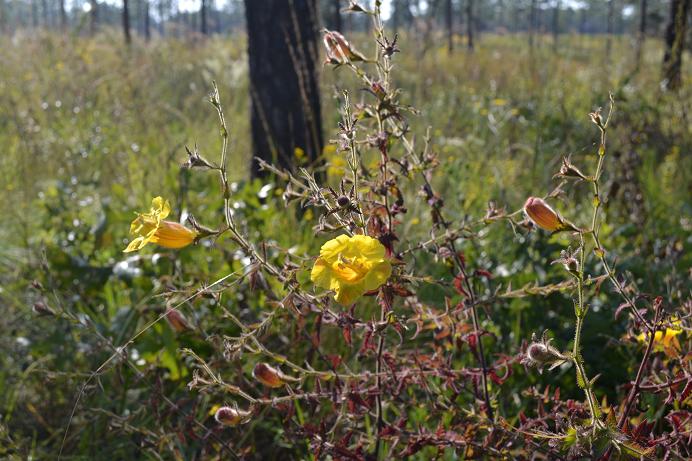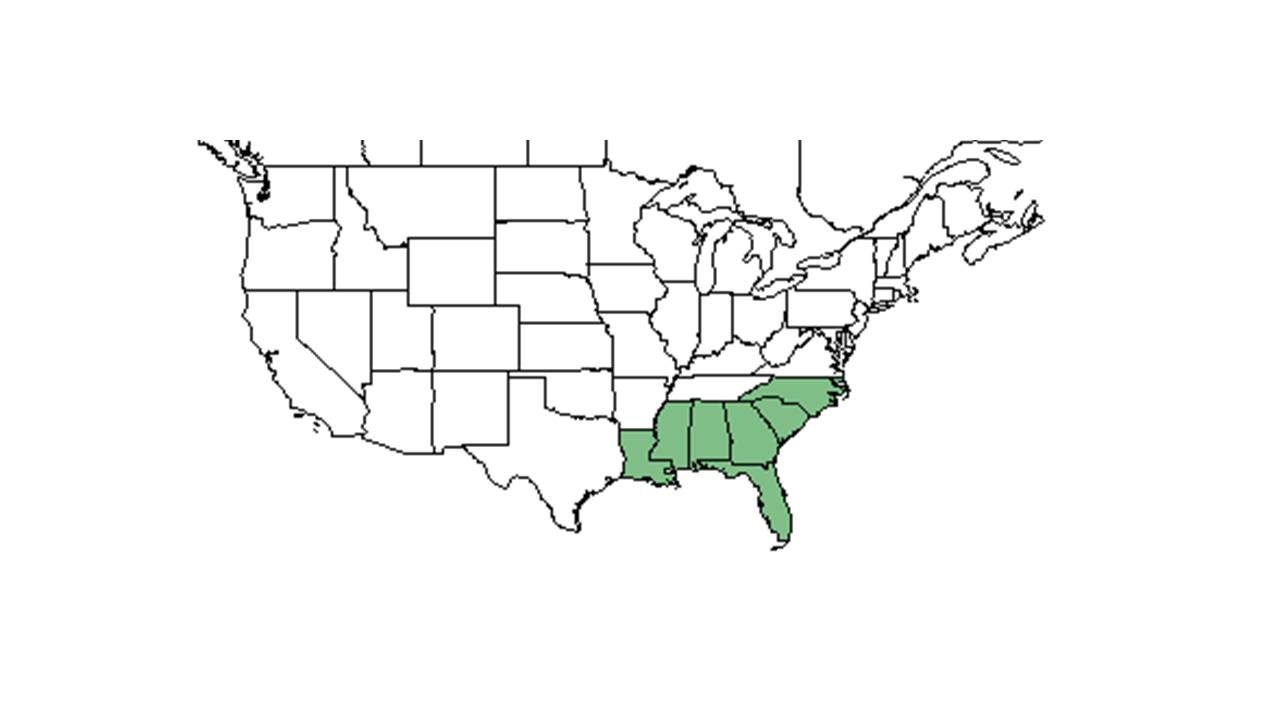Difference between revisions of "Seymeria pectinata"
(→Pollination) |
(→Distribution) |
||
| Line 20: | Line 20: | ||
<!-- Basic life history facts such as annual/perrenial, monoecious/dioecious, root morphology, seed type, etc. --> | <!-- Basic life history facts such as annual/perrenial, monoecious/dioecious, root morphology, seed type, etc. --> | ||
==Distribution== | ==Distribution== | ||
| + | “Combleaf seymeria is much more restricted in its distribution than senna seymeria (''Seymeria cassioides'') and also has a much broader host range. It prefers drier sites (such as turkey oak-scrub oak woods) than ''S. cassioides'', but on rare occasions both may be found growing together. We have found no evidence of hybridization between the two species. In our previous studies S. pectinata parasitized yellow poplar, blackgum, water tupelo, pecan, sweetgum, green American sycamore, and four different pines. These species are not present in the communities where ''S. pectinata'' grows, which indicates a pathogen potential, especially on drier sites in the Deep South. “ – Musselman and Mann 1978. | ||
| + | |||
==Ecology== | ==Ecology== | ||
===Habitat=== <!--Natural communities, human disturbed habitats, topography, hydrology, soils, light, fire regime requirements for removal of competition, etc.--> | ===Habitat=== <!--Natural communities, human disturbed habitats, topography, hydrology, soils, light, fire regime requirements for removal of competition, etc.--> | ||
Revision as of 18:58, 17 June 2015
| Seymeria pectinata | |
|---|---|

| |
| Photo taken by Kevin Robertson | |
| Scientific classification | |
| Kingdom: | Plantae |
| Division: | Magnoliophyta – Flowering plants |
| Class: | Magnoliopsida – Dicotyledons |
| Order: | Scrophulariales |
| Family: | Scrophulariaceae |
| Genus: | Seymeria |
| Species: | S. pectinata |
| Binomial name | |
| Seymeria pectinata Pursh | |

| |
| Natural range of Seymeria pectinata from USDA NRCS Plants Database. | |
Contents
Description
Distribution
“Combleaf seymeria is much more restricted in its distribution than senna seymeria (Seymeria cassioides) and also has a much broader host range. It prefers drier sites (such as turkey oak-scrub oak woods) than S. cassioides, but on rare occasions both may be found growing together. We have found no evidence of hybridization between the two species. In our previous studies S. pectinata parasitized yellow poplar, blackgum, water tupelo, pecan, sweetgum, green American sycamore, and four different pines. These species are not present in the communities where S. pectinata grows, which indicates a pathogen potential, especially on drier sites in the Deep South. “ – Musselman and Mann 1978.
Ecology
Habitat
Phenology
Seed dispersal
Seed bank and germination
Fire ecology
Pollination
Deyrup conducted a study and observed these bees, Augochlorella aurata, Augochloropsis sumptuosa, Dialictus placidensis, Anthidiellum notatum rufimaculatum, A. perplexum, Coelioxys sayi, Megachile brevis pseudobrevis, M. mendica, M. petulans, and Bombus impatiens, on S. pectinata (2002).